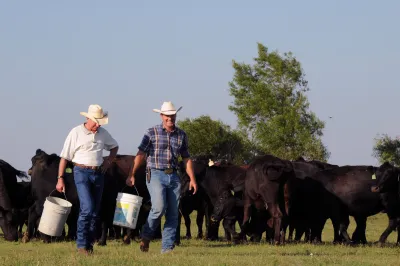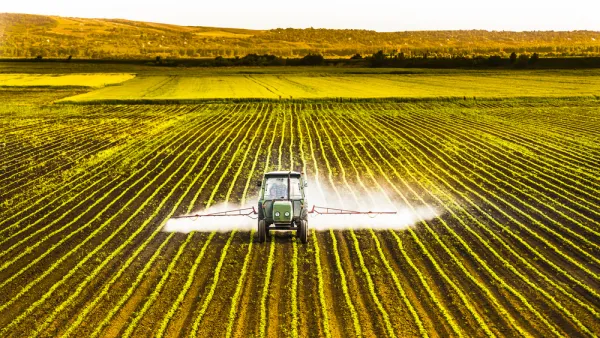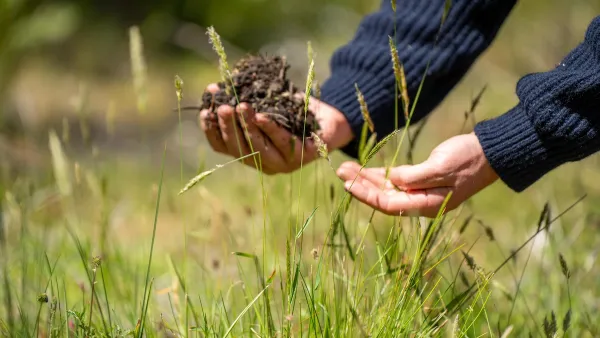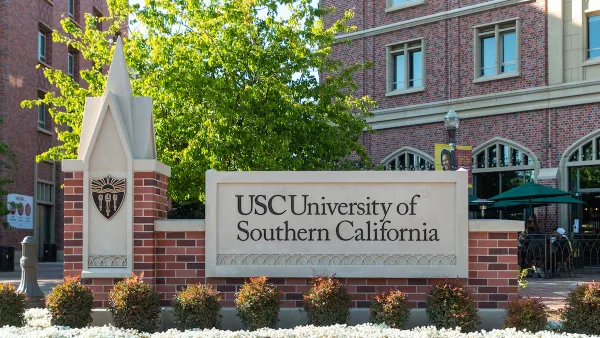With world population to grow by about 2 billion by 2050, and with more people eating higher on the food chain as nations develop economically, can world agriculture reduce its carbon footprint? A new World Resources Institute report shows how.

“Food is the mother of all sustainability challenges,” says Janet Ranganathan, vice president for science and research at the World Resources Institute (WRI), a global research organization. “We can’t get below 2 degrees Celsius without major changes to this system.”
She says that’s why the group’s report, Creating A Sustainable Food Future, released Dec. 5, 2018, is “one of the most important...that we’ve ever published," reports Jenny Splitter for Forbes.
Its authors set out to answer the most critical question facing the global food system today: how to feed the nearly 10 billion people expected to populate the earth by 2050 [up from almost 7.7 billion people today] in a way that doesn’t completely wreck the planet.
"Agriculture already occupies roughly 40 percent of the world’s land and is responsible for about a quarter of humanity’s greenhouse gas emissions," adds Brad Plumer for The New York Times's climate team in his piece on the WRI report.
"Increasing the amount of food produced per hectare was the most critical step, the experts said, followed by cutting meat-eating and putting a stop to the wasting of one-third of food produced," reports Damian Carrington, the Guardian's environment editor.
Chicken is not meat, or at least not "ruminant meat"
Restricting meat-eating need not mean becoming a vegetarian, though Carrington did pen a column on Dec. 22, "Why I’m looking forward to my first vegan Christmas."
“We could imagine a significant shift from beef to chicken, and that by itself goes a long way," said lead author Timothy D. Searchinger of Princeton University. “Poultry production has about one-eighth the climate impact of beef production," adds Plumer.
"According to Searchinger, WRI is recommending 'that two million heavy consumers of meat, lamb and goat in 2050 in the U.S., Russia, Europe, and Brazil, limit their consumption to 1.5 servings per person per week,' so the world can meet its overall reduction goals while, at the same time, acknowledging that 'the world’s poor people are entitled to consume at least a little more',” adds Splitter.
"Ruminant livestock (cattle, sheep, and goats) use two-thirds of global agricultural land and contribute roughly half of agriculture’s production-related emissions," states the executive summary [pdf]. "Ruminant meat demand is projected to grow by 88 percent between 2010 and 2050."
"Avoiding meat and dairy is ‘single biggest way’ to reduce your impact on Earth," reported Carrington of the Guardian on a study published in Science on June 1 that corroborated the outsized impacts of ruminants.
Not by efficiency alone
While efficiency—producing more food on less land, was the report's most critical finding, it recommended tying it to conservation, notes Splitter.
In order to protect natural resources even as farms become more efficient, Searchinger says “governments need to explicitly link...yield gains to protection of forests and other natural lands.” Through government regulation, natural ecosystems can be protected and agricultural expansion, when necessary, can be limited to avoid sacrificing resource-rich lands like tropical rainforests."
The report also looked at human population growth to reduce food demand "by reducing fertility levels, voluntarily, through 'improving education for girls, reducing child mortality and providing access to reproductive health services'," adds Splitter. Presumably this recommendation would be applicable to developing nations in Africa which have the world's highest fertility rates, unlike many economically developed nations where they have fallen below replacement levels.
FULL STORY: How To Feed The World Sustainably? Grow More With Less, New Study Finds

Analysis: Cybertruck Fatality Rate Far Exceeds That of Ford Pinto
The Tesla Cybertruck was recalled seven times last year.

National Parks Layoffs Will Cause Communities to Lose Billions
Thousands of essential park workers were laid off this week, just before the busy spring break season.

Retro-silient?: America’s First “Eco-burb,” The Woodlands Turns 50
A master-planned community north of Houston offers lessons on green infrastructure and resilient design, but falls short of its founder’s lofty affordability and walkability goals.

Test News Post 1
This is a summary

Analysis: Cybertruck Fatality Rate Far Exceeds That of Ford Pinto
The Tesla Cybertruck was recalled seven times last year.

Test News Headline 46
Test for the image on the front page.
Urban Design for Planners 1: Software Tools
This six-course series explores essential urban design concepts using open source software and equips planners with the tools they need to participate fully in the urban design process.
Planning for Universal Design
Learn the tools for implementing Universal Design in planning regulations.
EMC Planning Group, Inc.
Planetizen
Planetizen
Mpact (formerly Rail~Volution)
Great Falls Development Authority, Inc.
HUDs Office of Policy Development and Research
NYU Wagner Graduate School of Public Service




























